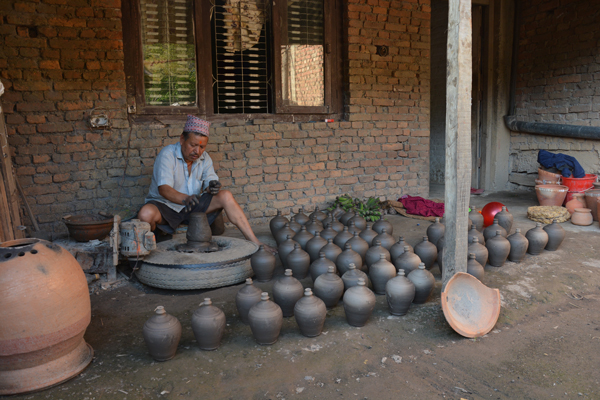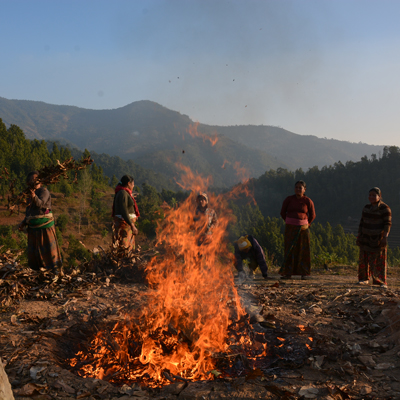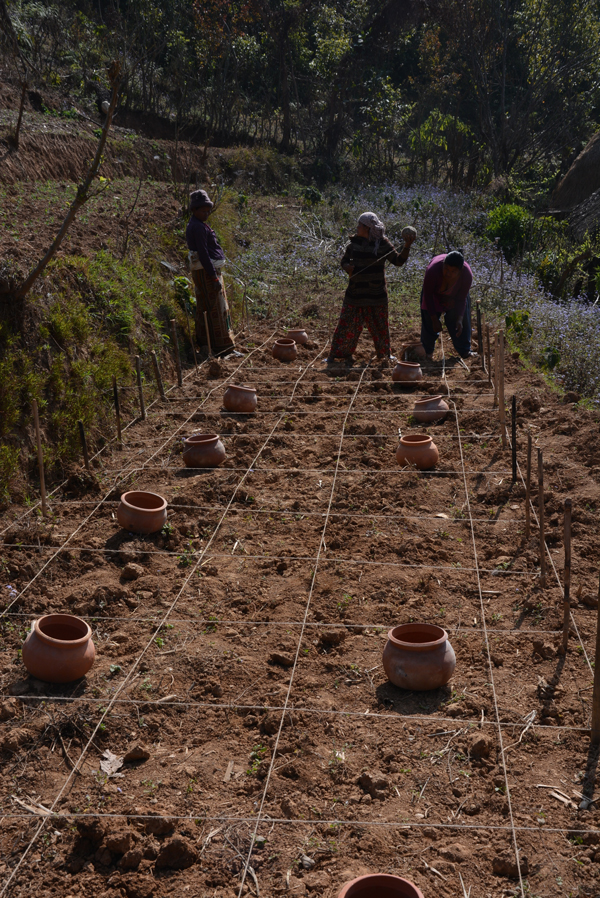We have been exploring ways where the Kon-Tiki kilns built in Nepal could be put to good use in their recovery from the recent series of earthquakes. One impact that urgently needs attention is the outbreak of cholera. Cholera is one of several diseases which can exacerbate an already difficult post-disaster situation. Contaminated food or water is a breeding ground for cholera bacterium. Those infected suffer from serious diarrhea, dehydration and in the worst cases death unless clean water is available for rehydration.
Although prevention of cholera rests on a handful of straightforward principals, these can prove very challenging after an earthquake, a hurricane or any number of other disasters. Having the ability to heat food and water provides a substantial tool in fighting off cholera. The ability to produce charcoal adds additional tools for fighting off infection. We believe the Kon-Tiki kilns provide multiple ways for post-disaster victims to minimize their chances of becoming infected. Here are a few of our recommendations:
1. Boiling water for a full minute will kill bacteria and generate 'safe water'. This can easily be done over the Kon-Tiki kiln.
2. Cleanliness is very important for reducing exposure but can be challenging when cleaning supplies are limited. Early research has shown that the quench water collected from the Kon-Tiki has a very high pH around 11 and could be used as a cleaning agent for certain situations (highly alkaline cleaning products are used for all purpose cleaning as well as laundry detergent). We are also investigating ways to convert this quench water, which has similar properties to lye, directly into liquid soap.
3. Another area of concern is related to human excrement. Feces can be a carrier for many diseases and as such should be managed properly, which can be difficult in crowded situations with poor infrastructure. One management technique is to dig ditches for latrines and then bury the residues when they are full. Adding biochar as a base layer and periodically to the layers that build up will not only control odors but can prevent pathogens from contaminating groundwater. An additional way to incorporate biochar could be to build latrines using locally available materials including biochar (more information here on a recent latrine project we worked on with engineering students from the Rochester Institute of Technology for use in Haiti). In some situations it might become feasible to convert human waste into biochar but systems capable of doing this tend to be larger scale and may need more resources than would be available in most post-disaster situations.
4. The other recommended method for minimizing cholera exposure relates to food. It is critical to cook food well and store it in covered containers. Once again the Kon-Tiki kiln can be of assistance by using the kilns to cook food. Various different types of cooking accessories from spits to grills can easily be used with the kiln.
In Nepal we have experimented with "charamics" (i.e. the combination of biochar and clay in ceramic pots). One area of future exploration may be to use such pots, which we are currently using for clay pot irrigation trials, in Zeer Pots to refrigerate vegetables and meat to help extend their shelf life. Basically Zeer Pots provide a low tech refrigeration option using nested clay pots with sand in between them. The sand has to be kept wet and thus water evaporates between the two pots cooling down the food in the inner pot (see here for a more detailed description). Substituting biochar for the sand would make these very easy to manufacture locally and more efficient as biochar can hold much more water than sand.

Chandra Bahadur Prajapati making biochar-clay pots in Nepal (notice the potter's clever invention of a turning wheel made from an old tire). Clay to biochar ration is 4:1 with biochar very finely ground.
No doubt there are other ways for biochar and kilns to help with post-disaster recovery. We are very interested in highlighting these possibilities and creating discussion forums which can be openly shared with communities around the world.



Sanitation using composting
Placing human feces in a hole doesn't decontaminate it and it can migrate from there to contaminate water supplies yielding cholera, etc. Composting in temperate or warmer weather produces temperatures that kill pathogens present in human waste and if this is going to be attempted, biochar, applied regularly as the waste is accumulated, will absorb moisture and control odour. How one goes about dealing with human waste will vary with circumstances; war, earthquake, flood or civil breakdown all make different demands. There's probably a check list somewhere but mine would go something like:
1. Establish latrines as soon as possible for medical facilities, emergency shelters, rescue operations and local centers (markets, religious or social gatherings, etc.)
a. Latrines should provide for isolating and handling waste in a safe manner. Best would be barrels below each seat and some way to move/handle them to exchange and empty them.
b. Biochar and ashes and/or wood chips/sawdust should be used to cover the wast material after each use and water and soap should be available to wash after using the facilities.
c. Pay attention to local culture as well as the culture of people coming in to help in setting up and encouraging the use of such facilities.
d. Try to have someone who knows what he or she is doing in charge of the composting process and, if possible, direct runoff from it through a berm of wood chips and biochar supporting fungi that eat fecal pathogens. Obviously anything like this is hard to set up on the fly in the midst of a local emergency but it's about as important as how you handle the dead. You will have to depend on local people who have some idea of local resources to do a lot of this. Still it's important enough that there must be something like an international "shit squad" out there, if only as a section of different national relief efforts.